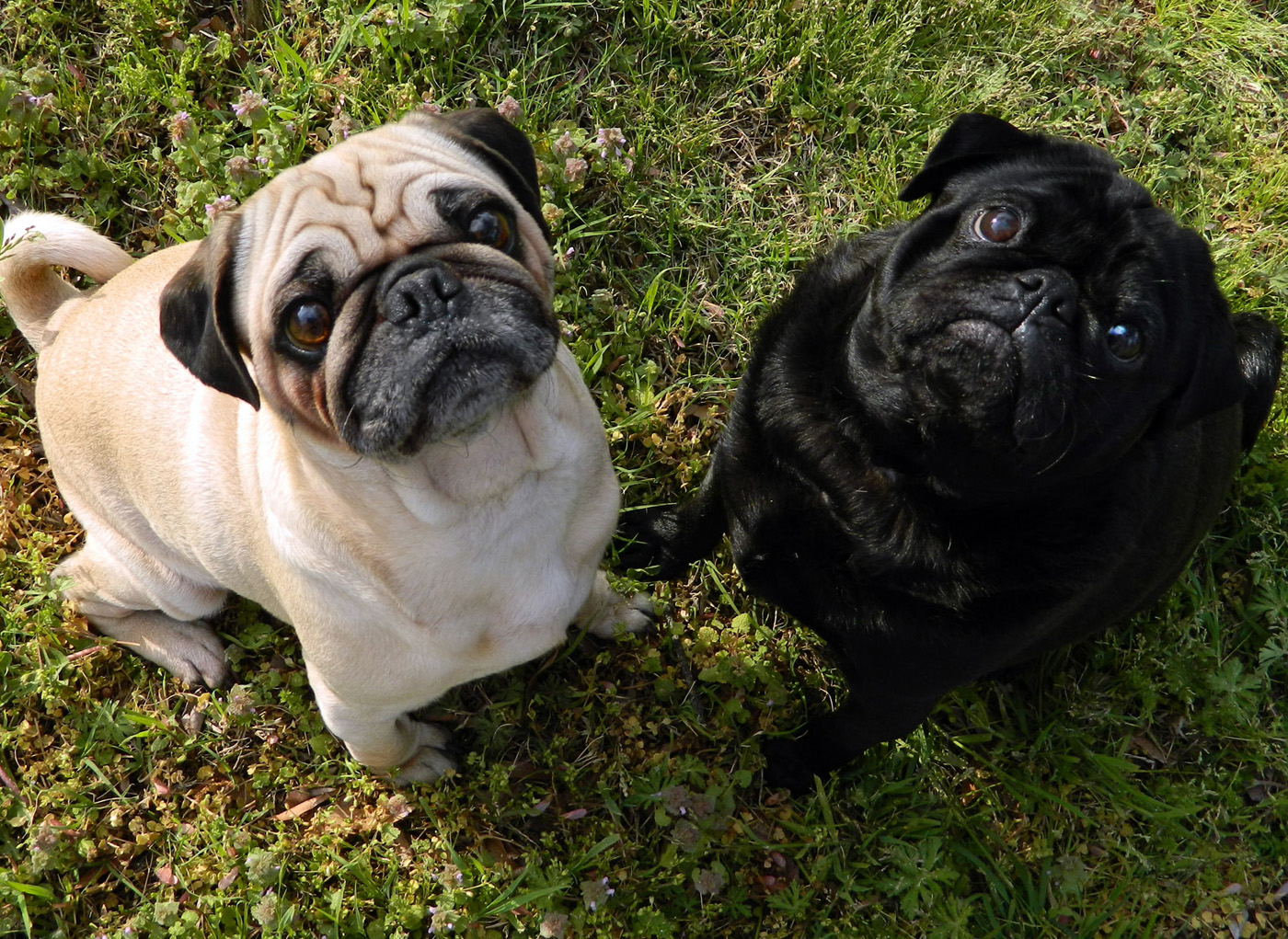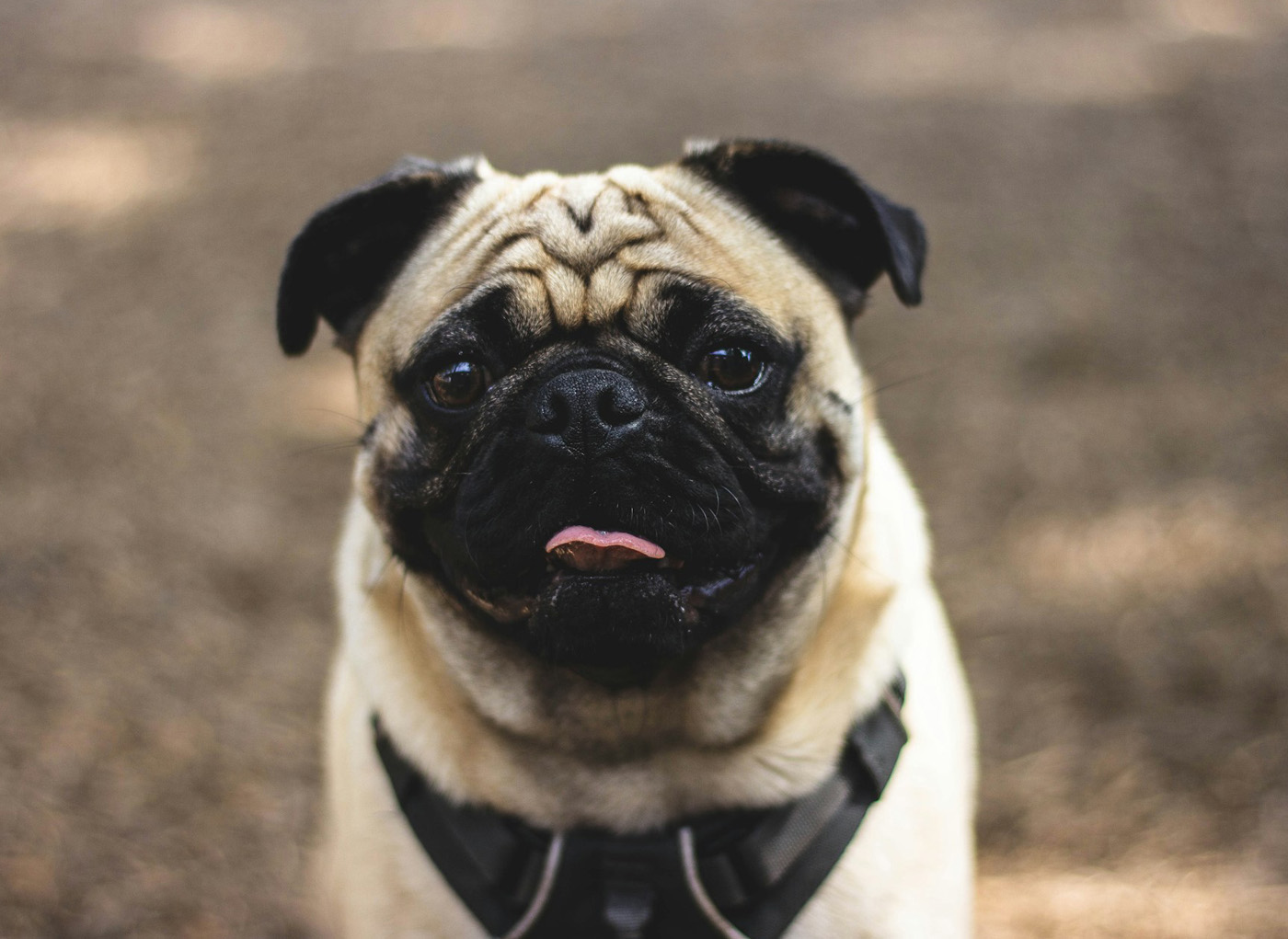
Photo: Erin Minuskin on Unsplash
Jump To Section
History
The Pug Dog has existed as a companion dog for a long time. The breed’s history dates far back, but the exact time period is a bit uncertain. Some sources talk about first century B.C. while others mention 6th or 8th century B.C. The overall belief seems to be that Pugs are descended from old dwarf-type dogs that existed in ancient China. The dogs were pets of emperors and they were considered a cherished gift to fellow nobility and rulers.
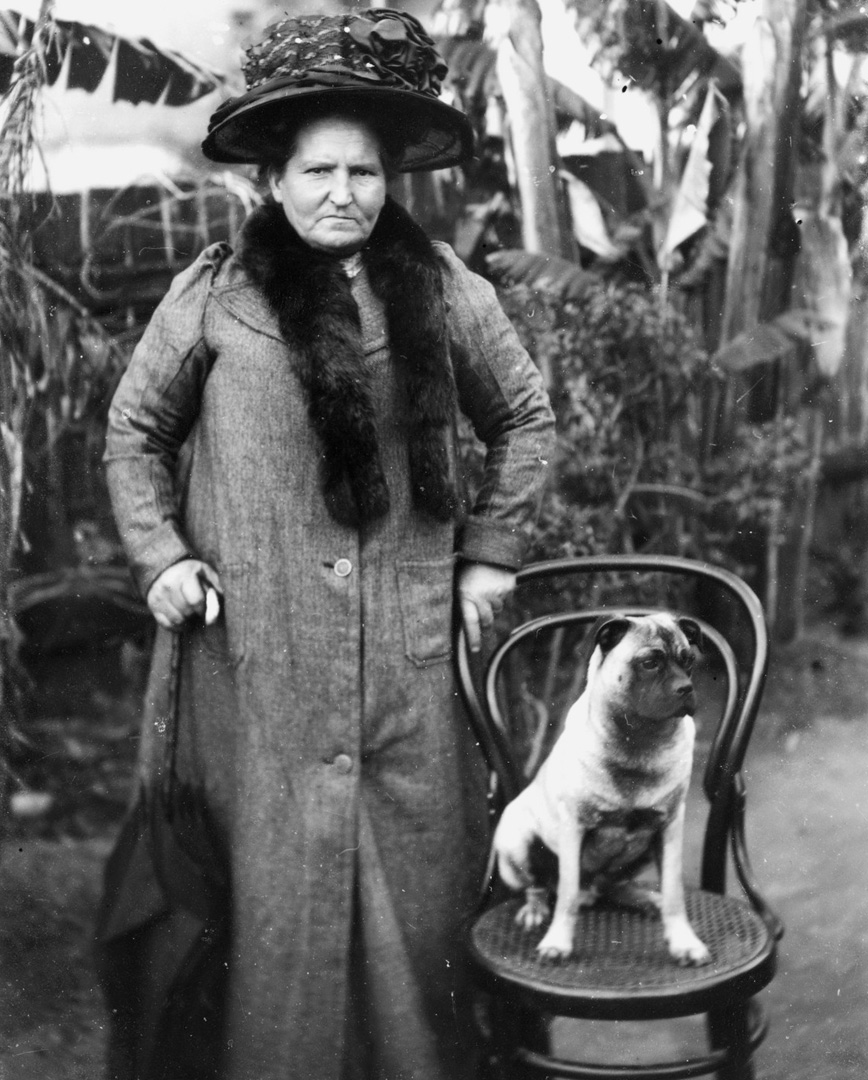
Portrait of a woman and her dog, 1900-1910. Photo: State Library of Queensland
Pugs were brought to Europe in the 16th century by Dutch traders. Presumably the breed spread from Holland to other countries eventually becoming a popular pet especially among European nobility. William of Orange, Queen Victoria and Empress Joséphine are known to have adored the Pug dog breed.
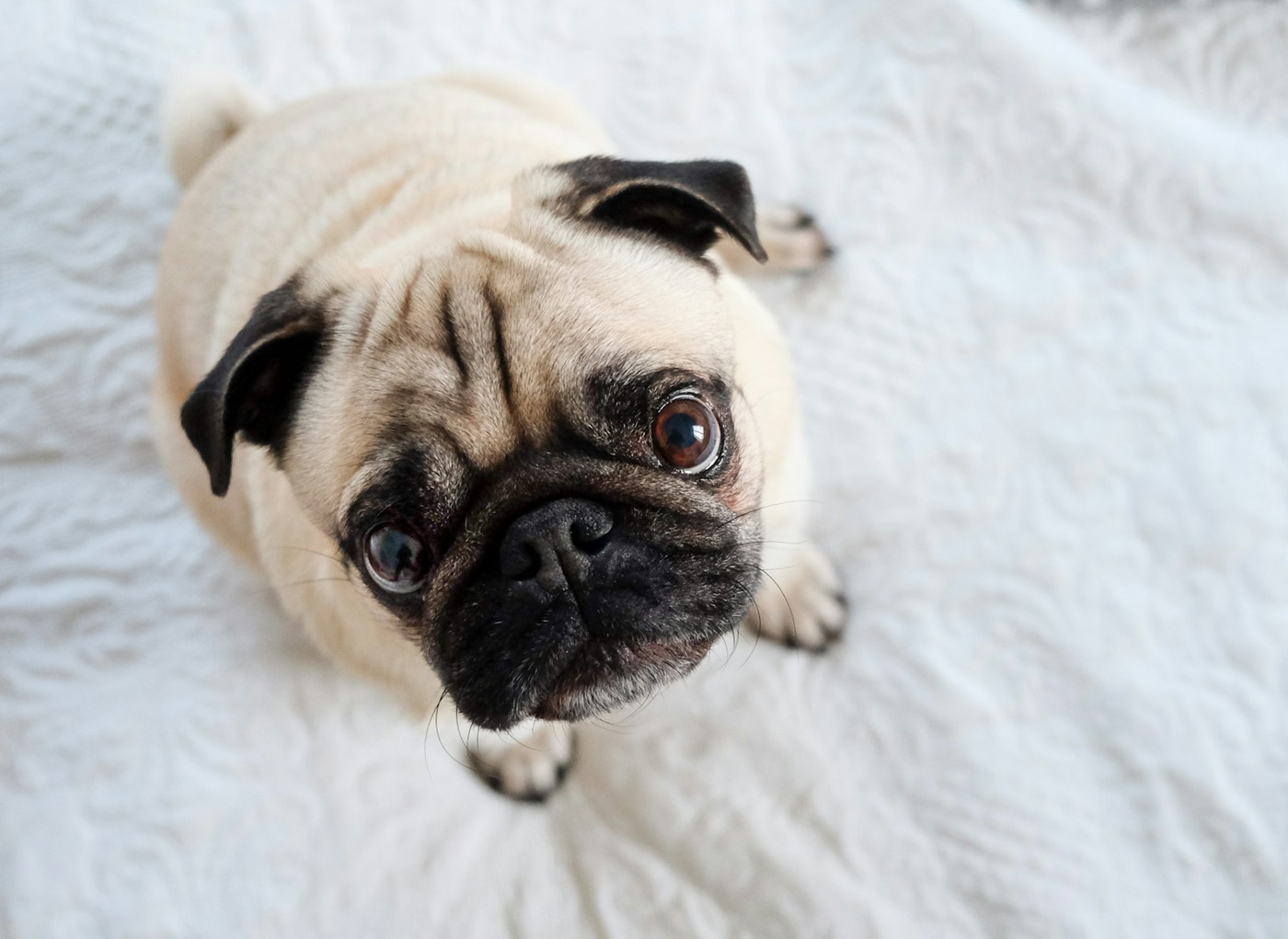
Photo: Karin Hiselius on Unsplash
Some sources mention England as the breed’s country of origin. Perhaps this is due to the fact that it was breeders in England who made the breed more like how we perceive it today. In 1883 a breed club was formed.
Initially only fawn color Pugs were the norm in Europe. Black color Pugs imported from China were introduced in a conformation show in 1886.
Over time these little dogs have been called by different names depending on the country. The dog’s appearance may have inspired some of the names. The English word “Pug” is thought to originate from the Latin word “Pugnus” which is described to mean a fist. In Germanic countries the breed is often known as “Mops”.
Appearance
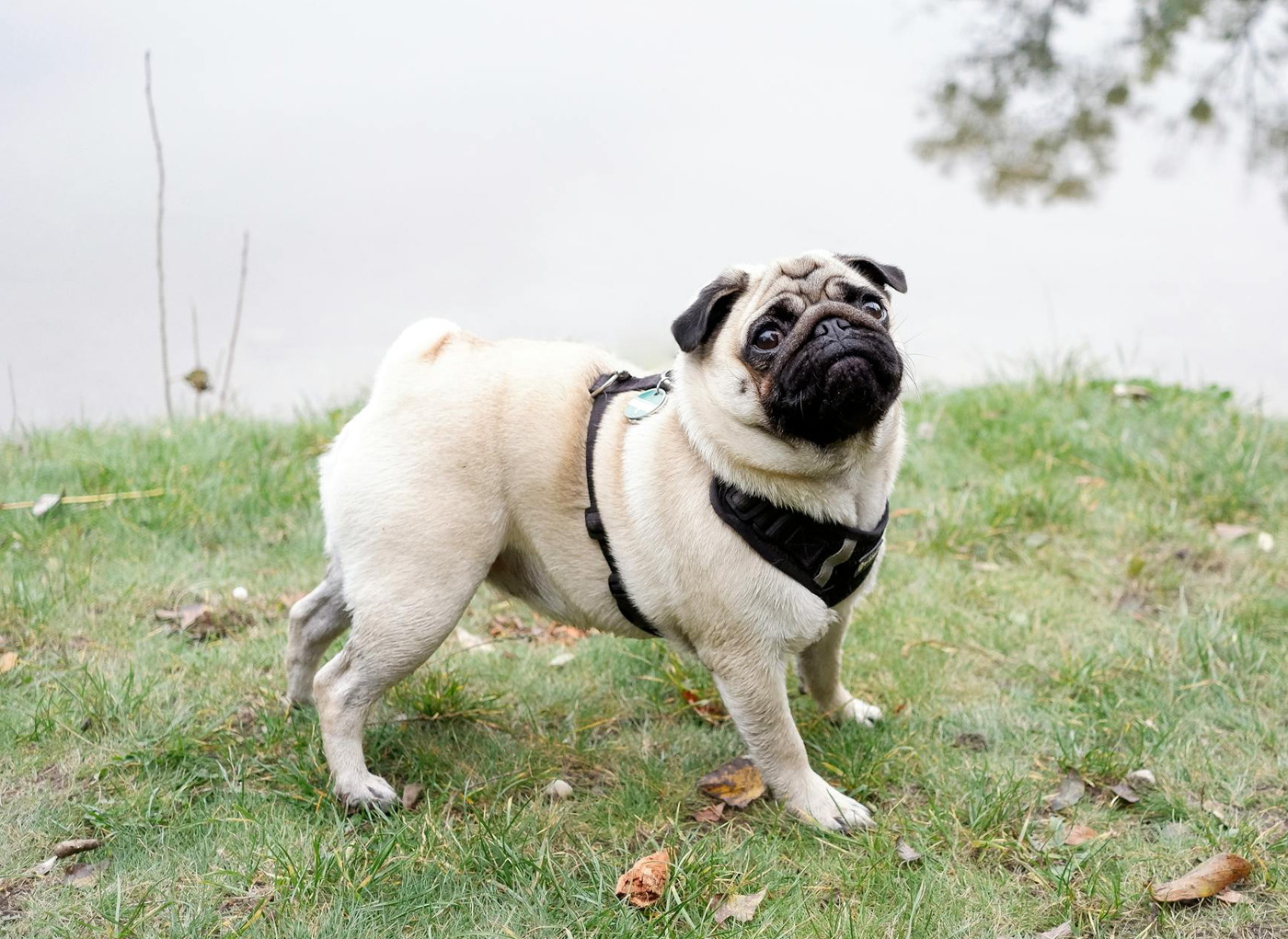
Photo: phloge
The Pug Dog is considered a small dog weighing about 6,5-8 kg (14-18lb). The dog’s wide chest and square body shape gives it a stocky look. The head is round with a rather memorable face as the muzzle is short with deep set wrinkles. The dog’s large eyes are bulbous and always dark in color. The head is framed with the dog’s small and soft ears that come in either “rose” or “button” shape.
The coat is short and smooth appearing in either fawn or black color. The fawn coat color can vary from silver fawn to apricot fawn. A black mask can be seen on the dog’s head including the ears and muzzle. There is also a black marking going from the dog’s back all the way to the dog’s tail that is curled over the hip.
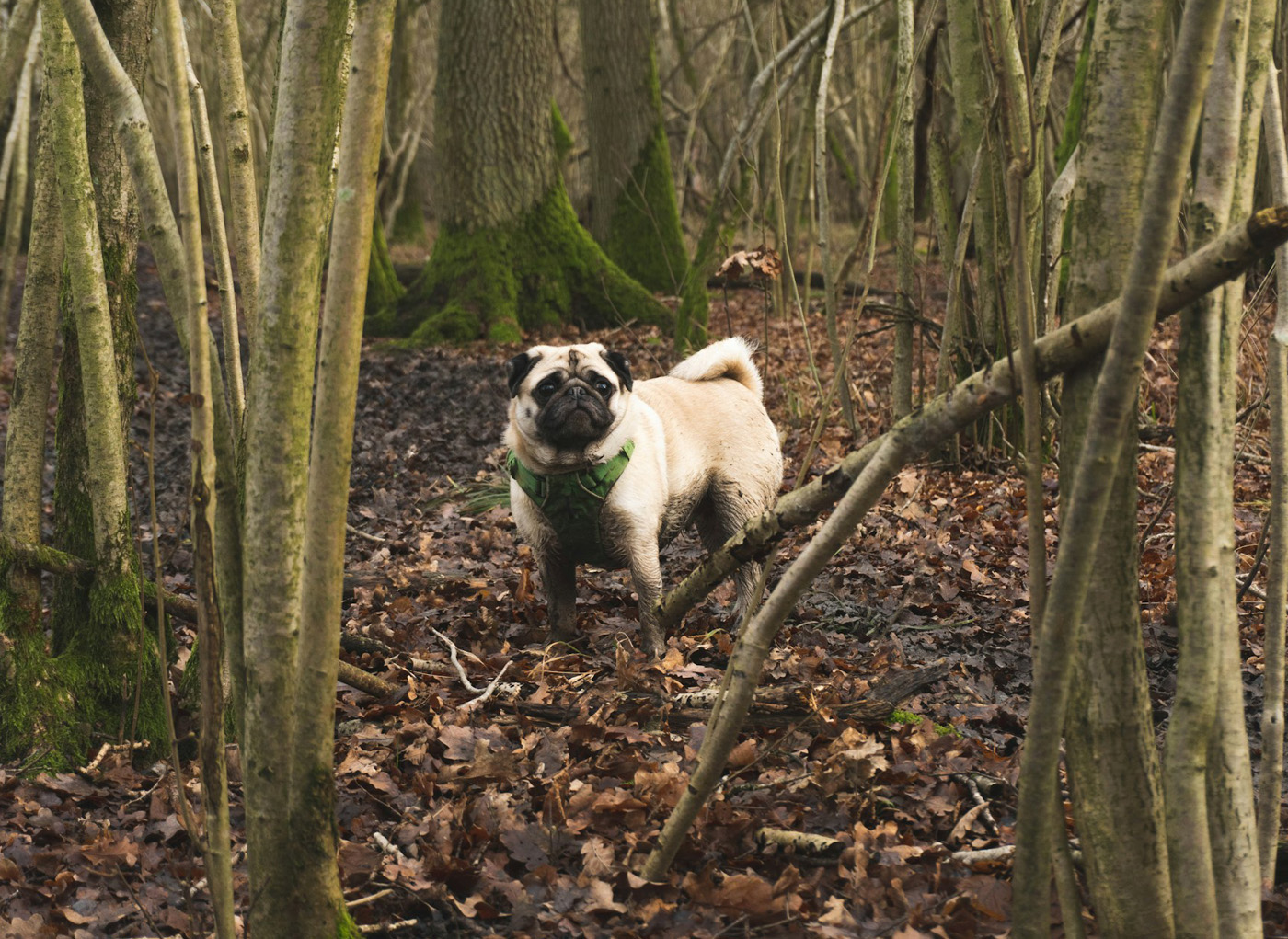
Photo: Kyle Bushnell on Unsplash
Temperament
An average Pug Dog is an easygoing dog that enjoys attention and affection. As companion dogs they are sociable and like to spend time with their family. The Pug Dog is generally friendly and playful to the point that they are sometimes called clowns. While these charming dogs are said to be intelligent and easy to train, they can also be stubborn at times.
When it comes to other household pets, Pugs often get along with other dogs and cats.
The breed is suitable for living in a city environment and they are mentioned as a fitting breed even for the elderly.
Health
An estimated lifespan of a Pug Dog is 12-15 years.
Health concerns may include:
- Brachycephalic obstructive airway syndrome (BOAS)
- Pug dog encephalitis (PDE)
- Patellar luxation
- Skin infections
- Hip dysplasia
- Legg-Calve-Perthes disease
- Entropion
- Allergies
- Obesity
Additional info:
- As a brachycephalic breed, Pug Dogs cannot withstand heat.
- The prominently exposed eyes are a sensitive part of a Pug Dog as they can get easily injured.
- Pugs are known to snore, especially if they are overweight.
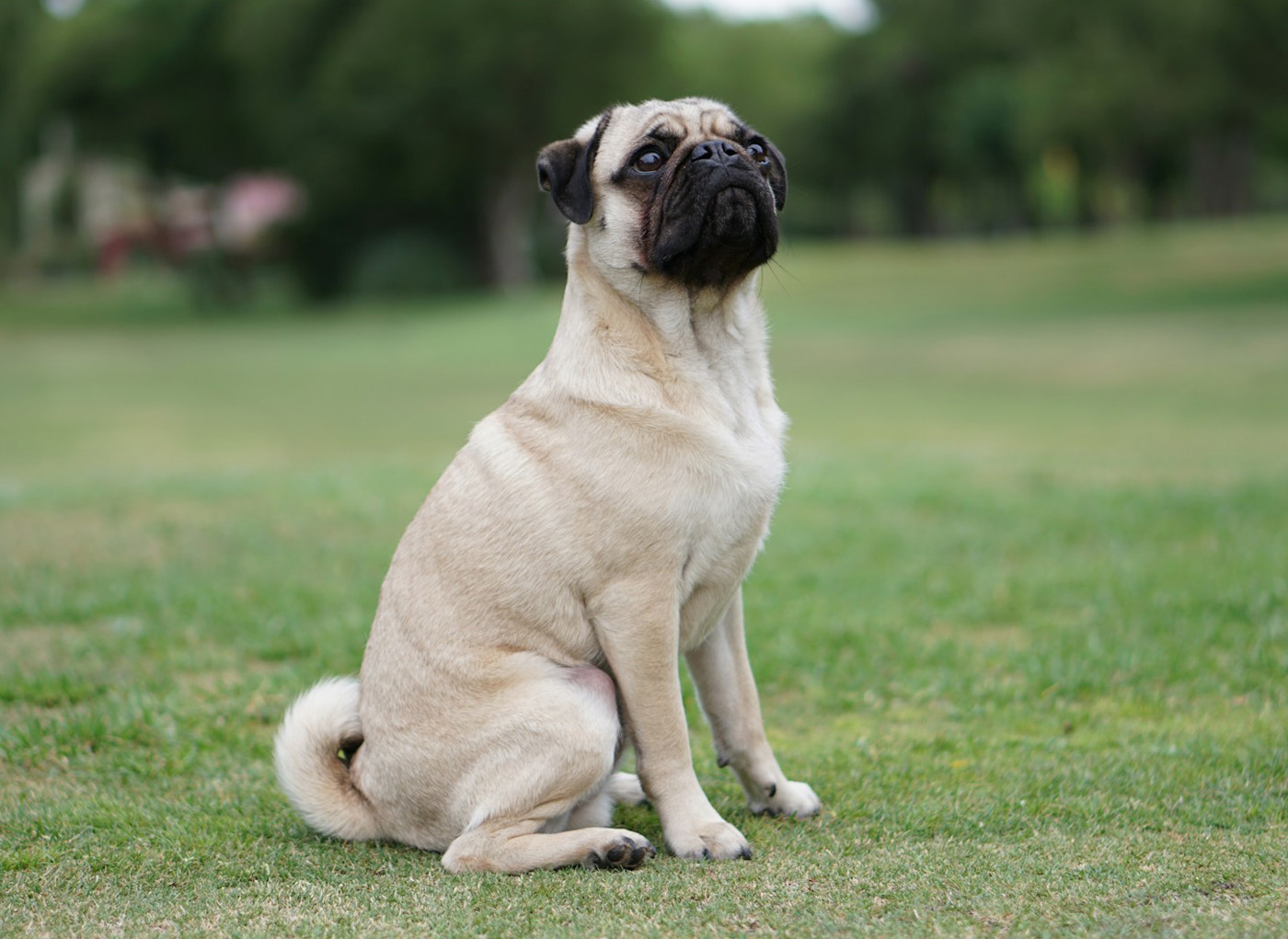
Photo: van pellegrini on Unsplash
Care, Exercise And Grooming
The wrinkles on the dog must be cleaned regularly and kept dry to minimize the risk of skin infections. The coat itself is dirt repelling, short and smooth requiring minimal grooming.
A Pug Dog’s exercise needs are often met with daily walks. The right exercise and diet are important when it comes to Pugs as this breed is prone to obesity.
Small children should be careful around the bulbous eyes of a Pug to avoid eye injuries.
As a brachycephalic breed, Pug Dogs cannot withstand heat. Proper care must be provided when the temperature gets hot or humid.
Similarly to all other dogs, also the Pug Dog’s nails, teeth, ears and overall upkeep with the dog’s well-being is needed. Regular checkups at the vet for vaccinations and other health related matters must be provided. Proper socialization is also a necessity for every dog no matter the breed.
References
1. 50 hundar. Sveriges populäraste hundraser. Tukan förlag 2016.
ISBN: 978-91-7617-733-4
2. American Kennel Club. The Complete Dog Book (p. 852). Random House Publishing Group. Kindle Edition.
eISBN : 978-0-307-41699-5
3. Åsa Lindholm, Ulla Barvefjord. Hundraser I Sverige. Prisma 2007.
ISBN: 978-91-518-4927-0
4. Koirarodut Suomessa. Maarit Laaksonen. Otava 2017.
ISBN: 978-951-1-31430-1
5. Coile Ph.D., Caroline. Encyclopedia of Dog Breeds (p. 3). Sourcebooks. Kindle Edition.
eISBN: 978-1-4380-6792-6


